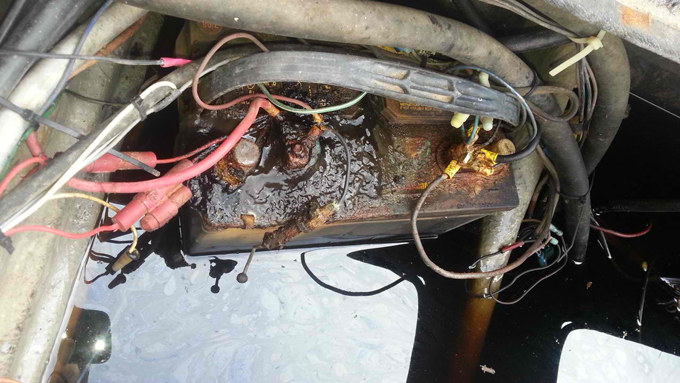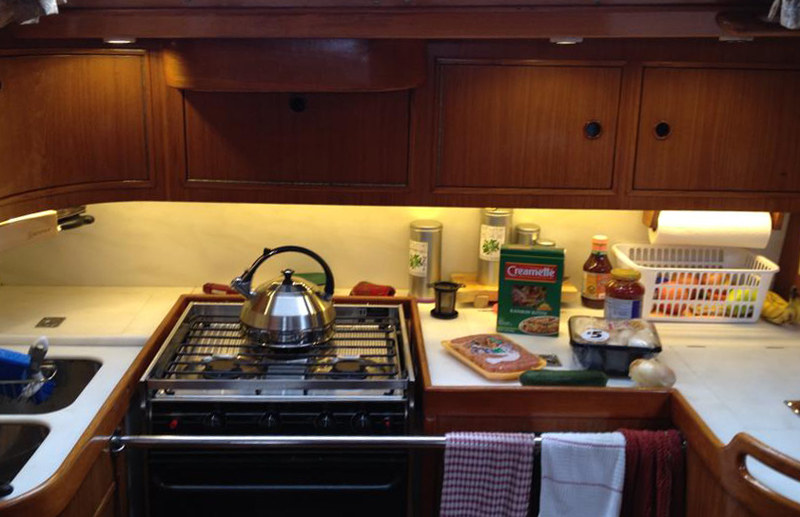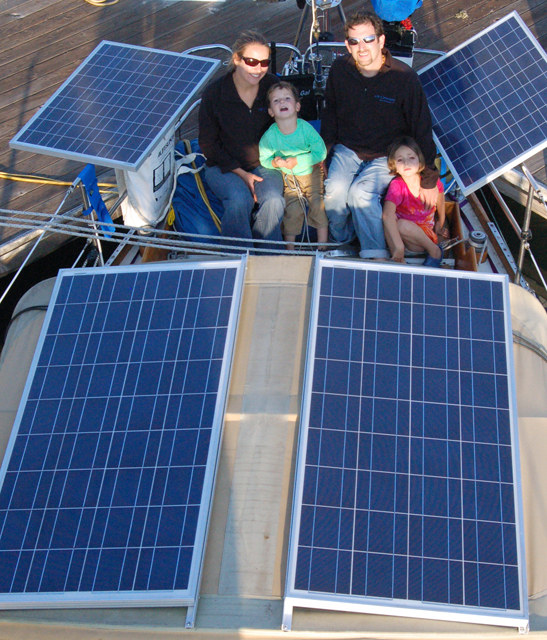
So You Want to Go Solar?
So you’ve been thinking about going solar but aren’t sure where to start. As much as you might not want to hear it, a quality solar installation probably isn’t going to be plug-n-play. But we’ve put together a down-and-dirty tutorial to help you get started.
1) Check your batteries. The best solar panels in the world won’t keep up with dead or dying batteries, so take yours to a battery shop for a load test to make sure they’re still holding a charge. If they are, double-check that your terminals are clean, connections are tight, and wiring is the correct size (no lamp cord or speaker wire, please!), and move on to Step 2. If not, you need to invest in new batteries before you go any further.

2) Calculate your usage. LED lighting and modern equipment can cut your electrical usage dramatically, but you still need to figure out just how much you use on a ‘normal’ day — cruisers draw far more amps than daysailers. West Marine has an excellent electrical budget worksheet to help you figure it out.

3) Pick your poison. Once you know your usage, you’ll need to decide what you want your solar installation to do. If you daysail your boat and have minimal usage, a trickle charger is probably all you’ll need. Folks who want to spend the weekend at anchor without running their engine to charge would need a bigger system. Running the boat entirely on solar requires the biggest commitment in space and money.
4) Choose your location. Two 50-watt solar panels offer benefits over one 100-watt panel. First, you have more mounting options — rails, biminis and dodgers, for example. Second, if one panel gets shaded by the boom or a shroud, at least the second panel will be putting out full power. Third, panels that can be adjusted throughout the day will bring in more power than one in a static position.

5) Buy your panels. There are a lot of options out there nowadays, and it can be very confusing. Regardless of your budget, keep the following in mind when selecting panels:
- Built for the marine environment. Many inexpensive panels are actually built for house systems and aren’t sealed the same way as marine panels. This can lead to quick corrosion, ruining the panel and wasting your money.
- Keep an open mind. Go through all the steps above before deciding on the type of panel you want. There have been big advances in flexible, semi-rigid- and rigid-frame panels over the past couple of years, so do your homework to figure out which suits your needs best.
- Check manufacture date. Technology moves fast, so you don’t want to get stuck with older, less efficient panels. That’s just what happened to a friend who got a screaming deal on ‘name brand’ panels, only to find that they were ‘new old stock’ that had been sitting in a warehouse for a decade!
6) Buy a charge controller. Choose a charge controller appropriate for the size of your system, and, if the budget allows, pick an MPPT controller because it will increase the output of your system and seems to do very well in the marine environment.
7) Install your system. Whether you DIY or hire a pro, here are a few tips: A) Make sure you use tinned marine wire (remember, get the right size) with heat-shrunk connections; B) keep the wire runs as short as possible; and C) mount the charge controller as close to the batteries as possible.
Building your solar system isn’t rocket science (yuk yuk yuk), but once it’s done, your boat will be a clean, green battery-charging machine. Our 400-watt solar installation has run our 47-ft boat — which uses a lot of power — for the last two years quietly and cleanly. The only maintenance required is wiping down the panels with Windex and a paper towel when needed. That’s the kind of boat work we can get on board with!
